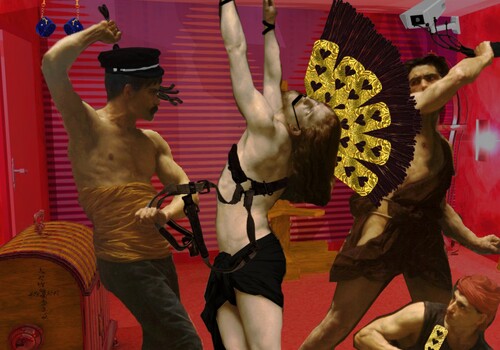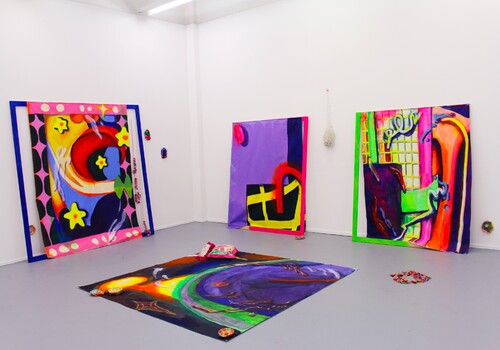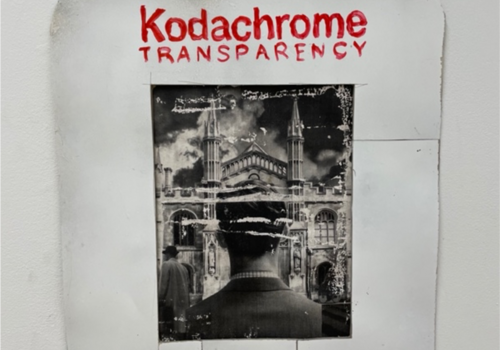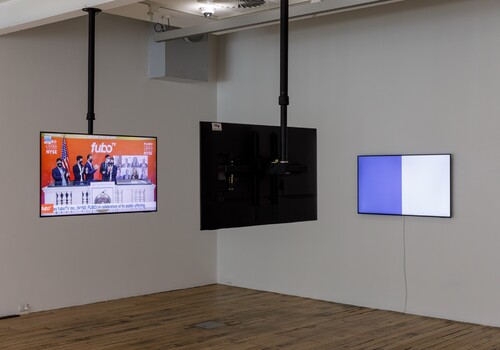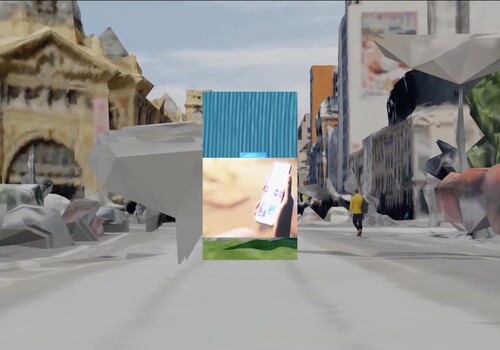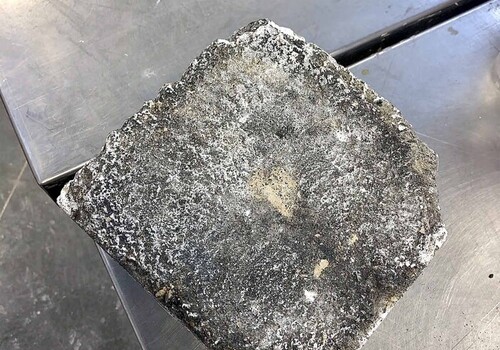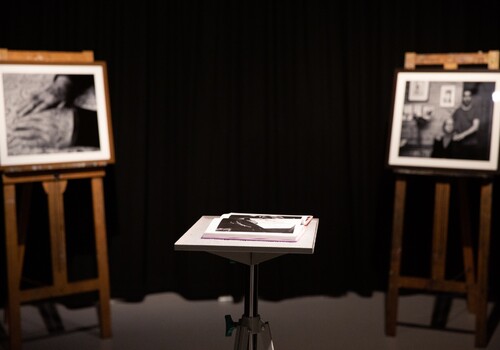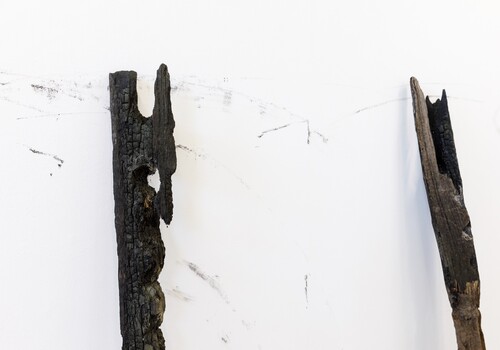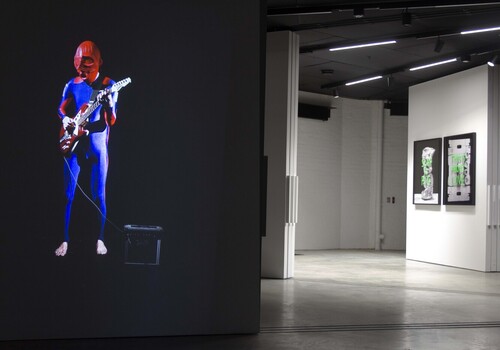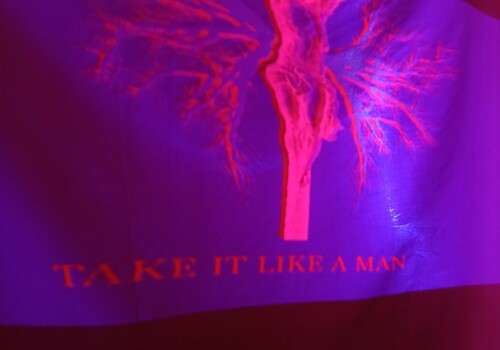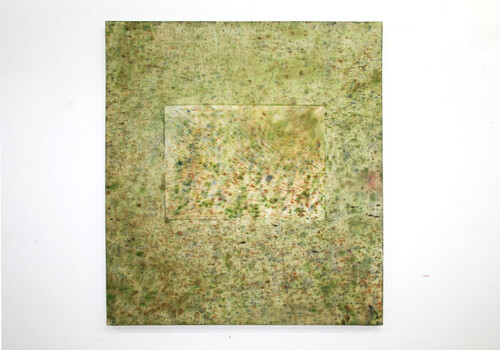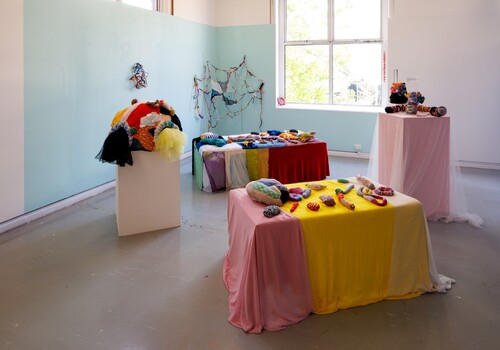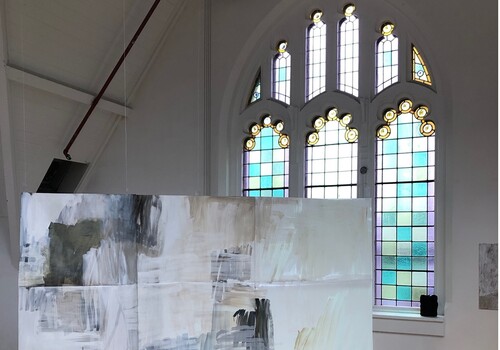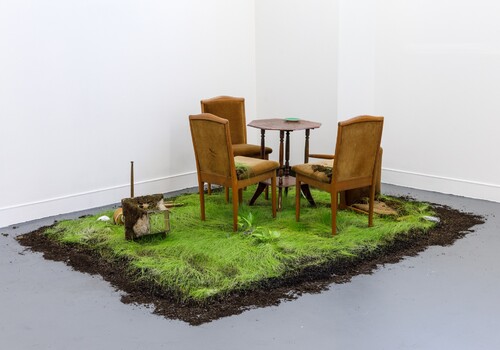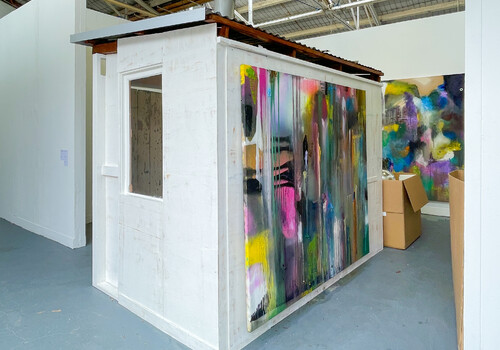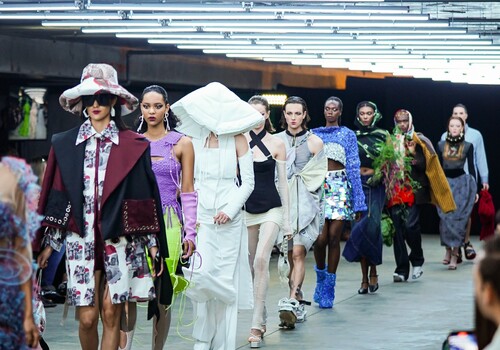Fashion, RMIT, Box Hill Institute, Holmesglen Institute, Kangan Institute, Whitehouse Institute of Design
By Jennifer Hunt
Underneath the stands of the MCG, a concrete carpark is transformed to an illuminated runway. Rows of stylish attendees outline the path for models, strutting in sync to the beat of pounding music. The Melbourne Fashion Week Student Collections Runway (featuring young designers from Box Hill Institute, Holmesglen Institute, Kangan Institute, RMIT and Whitehouse Institute of Design) is unlike other grad shows. Usually, it is the viewer who is in control of the duration and order they experience artworks, whereas the runway is curated to the very second. The audience must stay static as the work progresses before them. The sound, lighting and sequence is meticulously calculated to ensure a smooth display, as heads turn to follow every move. These intensely brief encounters are so unusual that my deeper readings of the work are enlightened by this uncontrollable brevity.



My first observation as I watch from the sidelines is the use of headwear in the styling of these collections, particularly from the RMIT graduates. Whether for protection (Emily Thomas and Alexander Beattie), tradition (Amber Šeštokas), or to evoke the form of an unravelling straw hat (Ruth Hazel), an outfit seems to be incomplete without one. We have become accustomed to wearing something on our face for the past year that it seems a rational evolution to employ the remainder of our heads to express style.


Another strong presence on the runway is the use of wool fibres. The wool industry in this country has a long and complex history, with Australian wool a major export and contributor to the global economy. The colonial impact of woollen materiality is explored by the work of Holmesglen Institute graduate Tatenda Serere, whose contemporary use of this fabric carries an acknowledgement of the long history of oppression from its production past and present. The luxury price tag that now accompanies this material is juxtaposed against the craft practice of knitting. Zoe May Sutherland’s collection Dopamine Knitwear speaks to this tension, by elevating hand craftmanship and techniques inspired by her grandmother’s handmade Barbie clothes onto the runway. The intricate lace work that is created with a vintage knitting machine floats like gossamer, defying the conventions expected of knitted apparel. The rusty earth colours speak to the natural origins of wool and stands apart from the other extremes of colour or monochrome dominating the runway.


To choose comfort is to assert the priority of feeling above the aesthetics of what we wear, but this does not make these two elements incongruous to each other. Take the work of Whitehouse Institute of Design students Grace Kim and Aimee Kingsland for example. The voluptuous dunes creating their garments transform the body into a mass of softness, ready to undertake the harshness of the external world. Rochelle Fitzpatrick and Samantha Saint James similarly found structure in softness to create striking silhouettes that left an impact harder than their plushness. In our tumultuous times, perhaps this is the uniform we deserve.

As I stand amongst a sea of phone cameras documenting every step, I realise the notion of this viewing experience and the very nature of contemporary fashion distribution is the ability to see this runway from multiple points of view once uploaded onto the ether of the internet. At the conclusion of my own viewing experience, I will take the importance of a hat-like adornment, comfortable armour, and material history with me every time I stare into the abyss of my wardrobe and say, “I have nothing to wear”.
Jennifer Hunt is an aspiring curator and creative living on Wadawurrung Country. Her research interests include dissecting the notion of truth in lens-based mediums and uncovering empirical collections in object-based investigations. She is a recent graduate from Monash University’s Art History and Curating program.
